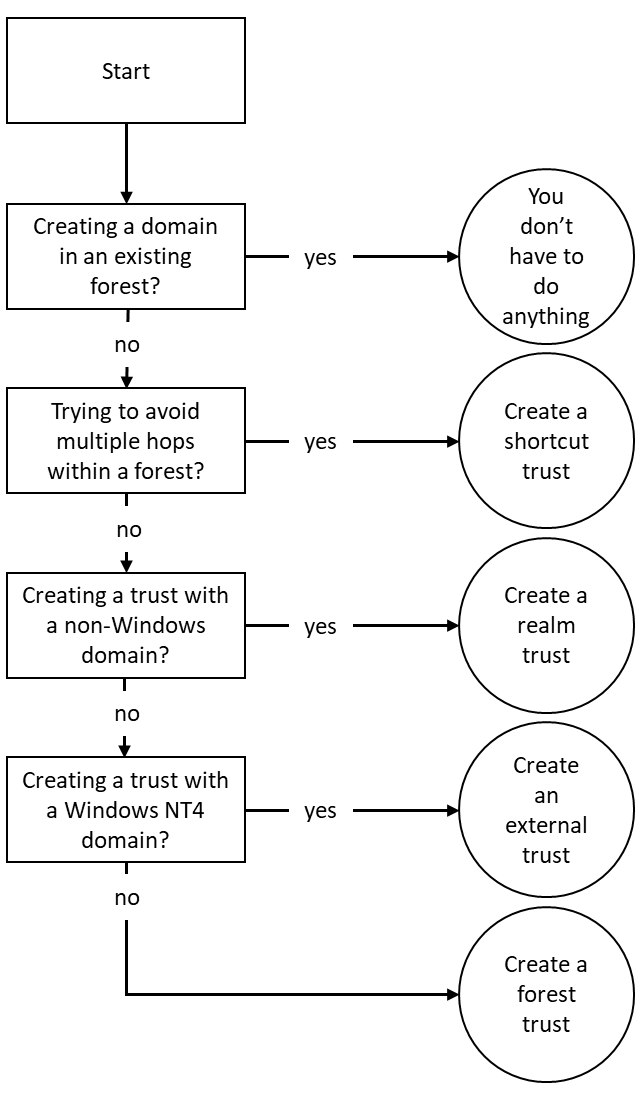In an Active Directory environment with multiple domains, you're bound to have trusts. Trusts allow people to access resources in a domain or forest other than the domain or forest where their user accounts reside.
When Active Directory domains are added to an existing Active Directory domain, two-way transitive trusts are automatically created. However, in other situations, trusts have to be created manually. With many different types of trusts, two trust directions, and a choice in transitivity, which trust is the right trust for which situation?
Let's take a look at the six types of trusts first:
- Parent-child trust: The parent-child trust is a trust type that is automatically created when you add a domain to a tree root. For example, a parent-child trust is automatically created between adatum.com and sub.adatum.com. You cannot manually create a parent-child trust.
- Tree-root trust: The tree-root trust is a trust type that is also automatically created, just like the parent-child trust. However, the tree-root trust is created when you add a new domain tree to an Active Directory forest. For example, when you add the domain to a forest that contains only the adatum.com domain. The difference between the tree-root trust and the parent-child trust is that with the former, you break the domain tree, whereas with the latter, you expand on it. You cannot manually create a tree-root trust.
- Forest trust: A forest trust is a trust type that you will have to create manually. When accounts in two separate Active Directory forests want to work together on each other's resources, then this is the right trust type to create between the two forest root domains. Creating a forest trust is highly preferable over creating an external trust, because the latter only supports older authentication schemes, whereas a forest trust supports Kerberos authentication.
- Realm trust: The realm trust type exists to help you connect with non-Active Directory environments, such as Samba-based environments and Novell eDirectory-based environments. The requirement for the other side of the trust is that it needs to support the Kerberos version.
- External trust: An external trust is a trust type that you will have to create manually. This trust type is truly versatile, as you can create a trust with any other environment, including Windows NT 4.0 Server-based environments. The downside is that it leverages NTLM as its authentication protocol; this is considered an outdated and weak protocol.
- Shortcut trust: In large Active Directory environments, authentication to access a resource may take a long time. As a user traverses trusts within an Active Directory forest, they have to perform Kerberos authentication up and down trees until they reach the domain with the resource they want to access. The rule of thumb is to create a shortcut trust when users in one domain regularly use resources in another domain (but within the same forest), and they have to traverse five, or more, trusts to get from the domain where their user accounts reside to the domain where the resources reside.
This creates the following flowchart:
















































































